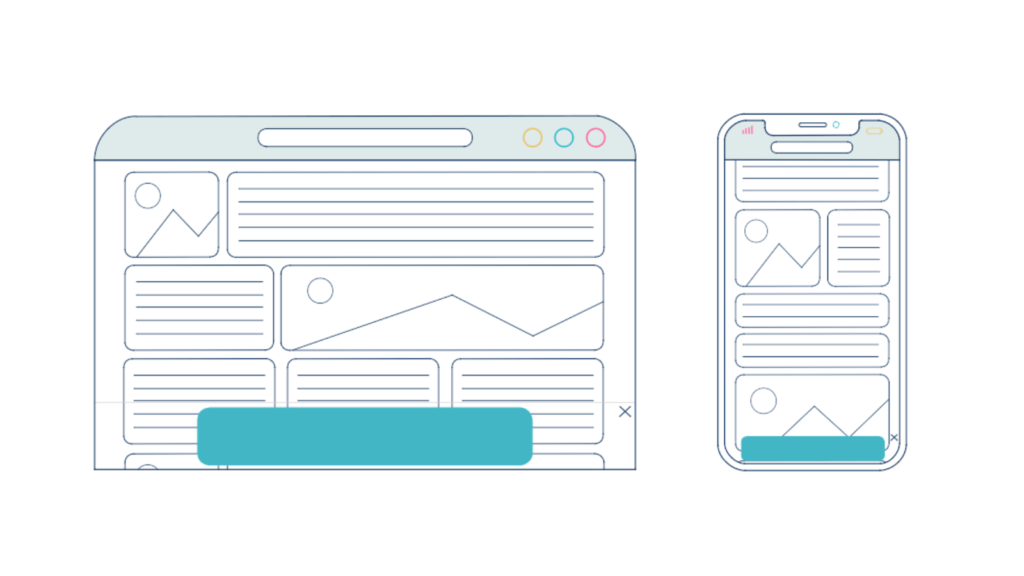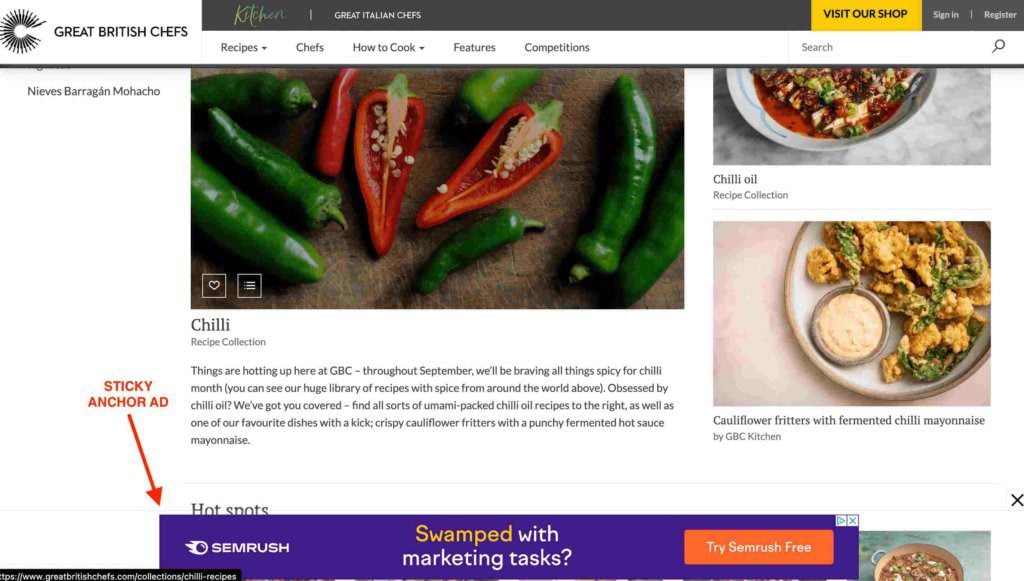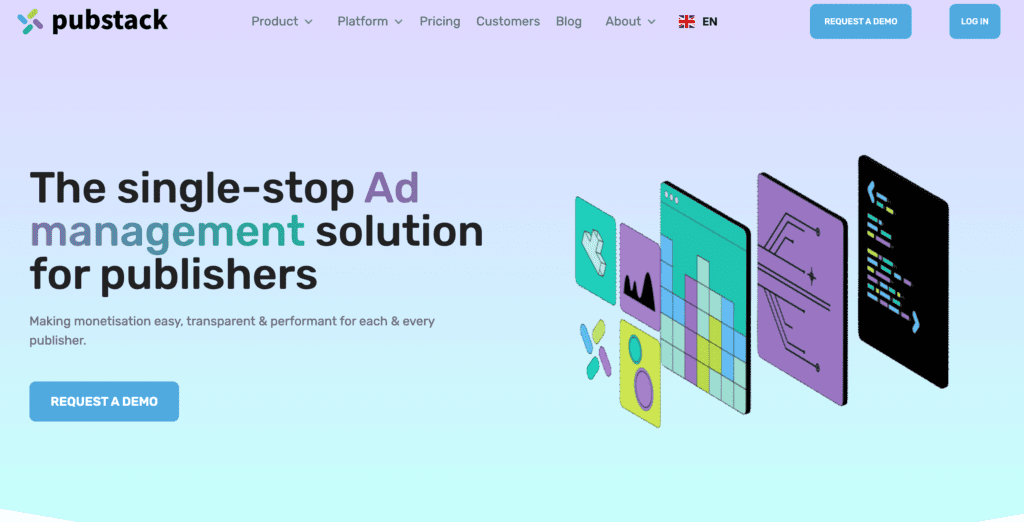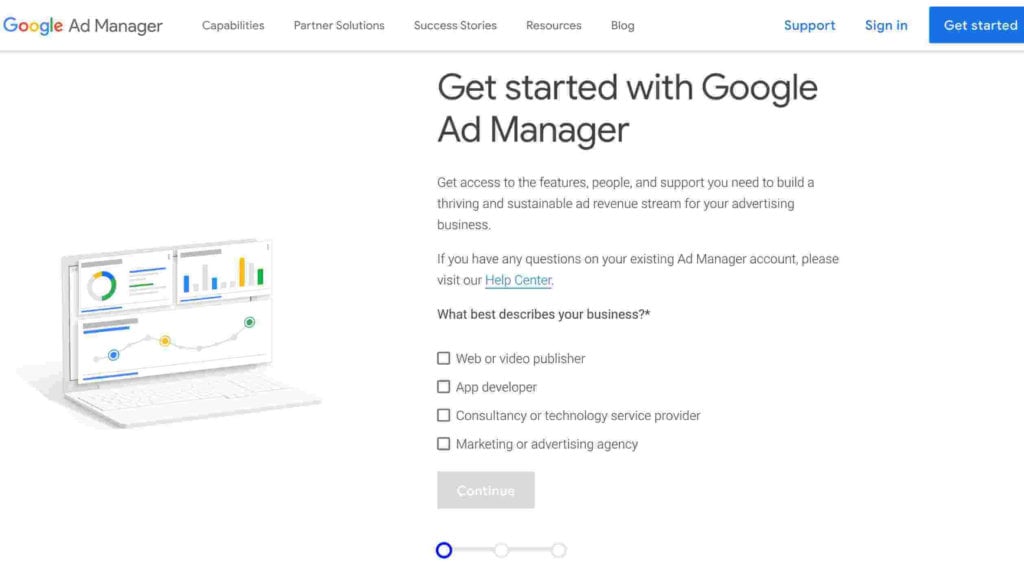Optimizing Prebid Wrapper’s Performance with Ad Refresh
Ad refresh is a technique that reloads ads in the same placement at set intervals or based on user actions to increase ad impressions and revenue. Optimizing the performance of your Prebid wrapper with ad refresh can significantly boost your ad revenue and user engagement, but it requires careful planning and execution.
Whether you’re looking to increase viewability, enhance fill rates, or drive higher CPMs, mastering the right ad refresh strategy is critical.
In this article, we’ll explore the fundamentals of ad refresh, compare different refresh strategies, and provide actionable insights to help you unlock the full potential of your Prebid wrapper.
Let’s dive in!

Understanding Prebid Wrappers
Explanation of Prebid wrappers and their role in header bidding
A Prebid wrapper is a JavaScript library that enables publishers to implement header bidding on their websites.
- Header bidding enables multiple demand partners to bid for ad impressions before the publisher’s ad server is called. This process happens in the browser’s header.
The Prebid wrapper is a container for managing these bids from various sources.
Within the auction, it simultaneously sends bid requests to all participating demand partners. Once the bids are received, the wrapper selects the highest bid and passes this information to the publisher’s ad server (e.g., GAM).
The ad server then decides whether to serve the highest header bid or the bids from its own network.
Note: Prebid.js is the most popular header bidding wrapper on the internet. It’s an open-source solution that simplifies header bidding implementation on publishers’ websites and mobile apps.
What is Ad Refresh? A Quick Recap
Definition of Ad Refresh
Ad refresh, also known as auto-refresh ads, is the practice of refreshing ads already displayed on a page without refreshing the page itself. Ad refresh allows displaying more ads for the same user in a single session, increasing the publisher’s ad revenue.
Different types of Ad Refresh
Event-based ad refresh
Event-based ad refresh occurs when a particular event predefined by a publisher is performed. These events are often not directly related to user interactions with the ad space itself but can include:
- System events: page loading, new content loading, video completion, or a specific time of day.
- Complex user actions: completing an online purchase, filling out a form, or navigating to a new section of the website.
This approach is highly effective for interactive content and websites that drive user engagement. It improves the relevance of the displayed ads and enhances user experience by aligning ad refreshes with natural user behaviors.
Time-based ad refresh
Time-based ad refresh operates on predetermined intervals, such as every 30, 60, or 90 seconds. This method is best suited for sites with consistent user engagement, like news websites or forums, where users spend significant time per session.
The key to effective time-based refresh is finding the optimal interval that balances ad visibility with user experience.
- Shorter intervals, such as 30 seconds, can increase ad impressions but may risk user fatigue if not managed carefully.
- Longer intervals, like 60 or 90 seconds, allow for less intrusive ad refreshes while capitalizing on high viewability and engagement.
Publishers should conduct A/B testing to determine the ideal refresh interval that maximizes revenue without compromising user satisfaction.
Scroll-based ad refresh
Scroll-based ad refresh is specifically triggered when a user scrolls to a particular point on the page. This is commonly used in long-form content or infinite scroll pages, where new ads are loaded as users move through the content.
The trigger is purely based on the user’s vertical movement through the content, without requiring any other interaction.
User action-based ad refresh
User action-based ad refresh encompasses any type of user interaction that can trigger an ad refresh. This includes:
- Scrolls: moving to a specific part of the page.
- Clicks: clicking on buttons or links.
- Mouse movements: hovering over interactive elements.
This type of refresh is highly responsive to user engagement and is typically used to refresh ads in real-time as users interact with content.
At first, it might seem similar to event-based ad refresh but the main difference lies in the nature of the trigger.
While both refresh types respond to user interactions, event-based refresh includes a wider array of triggers, potentially detached from immediate user input, whereas user action-based refresh is strictly tied to direct user activities.
Benefits of Ad Refresh in Prebid Wrappers
Boosting ad revenue by increasing the number of ad impressions
One of the most straightforward benefits is the potential for increased ad impressions. By refreshing ads at regular intervals or in response to user actions (e.g., scrolling or clicking), publishers can serve multiple ads in the same ad slot during a user’s session, effectively multiplying the number of impressions per visit.
This can be more beneficial for pages with high engagement, such as long-form content or interactive pages, where users spend more time and engage more deeply with the content.
Improving overall fill rates and CPM
Ad refresh can also contribute to improving overall fill rates and CPMs.
By increasing the number of available impressions, publishers can match their inventory to advertiser demand with higher accuracy, reducing the likelihood of unsold ad slots.
This, in turn, can improve fill rates–the percentage of ad slots that are filled with actual ads.
Additionally, refreshing ads in high viewability slots ensures that more impressions meet advertisers’ visibility requirements, which can result in higher CPMs. Advertisers are generally willing to pay a premium price for highly viewable impressions, as these are more likely to capture user attention and generate engagement.
Note: publishers should monitor the performance of their refresh strategy to avoid scenarios where refreshed impressions might not be valuable to advertisers, such as out-of-view refreshes, which can negatively impact both fill rates and CPMs.
That’s why using data analytics to fine-tune refresh intervals and optimize the placement of refreshed ads can help to maintain high CPMs.
Why does the CPM remain stable when the viewability increases?
When publishers increase the average viewability of their ads, the CPM tends to remain stable. This is because higher viewability makes the inventory more attractive to advertisers.
However, even though viewability is high, the first impression (the initial ad served before any refreshes) generally commands a higher CPM compared to subsequent refreshes.
The CPM of the first impression is typically higher because advertisers often bid more for the initial opportunity to engage a user. As ads are refreshed, the following impressions may not generate the same level of bids, leading to a drop in CPM for these refreshed impressions.
This gap in CPM between the first impression and the refreshed ones is normal and expected.
Solution: bid caching for enhanced revenue
Activating bid caching can help mitigate the decrease in CPMs for refreshed ads.
Bid caching allows the system to store the highest bid from a previous auction and use it again if the conditions are similar, like when an ad is refreshed in-view. This technique can help maintain or boost CPMs for refreshed ads by using previous high bids, thus generating more revenue from these refreshed impressions.
Enhancing demand from bidders with refreshed inventory
A correct ad refresh implementation increases the number of high-quality impressions available, providing more opportunities for demand partners to bid on ad slots. Thus, it fosters a more competitive bidding environment, as multiple advertisers aim for newly available, high-viewability impressions.
Prebid wrappers, integrated with real-time bidding platforms, enable advertisers to bid on these refreshed slots in real-time, which can lead to increased bid density and, ultimately, higher revenues for publishers.
To maximize the benefits, publishers should ensure that refreshed ads are visible to users and comply with industry standards to maintain trust and transparency with demand partners.
Another bonus is that refreshed inventory allows advertisers to reach users with updated and relevant messages throughout their browsing, leading to better engagement rates and successful ad campaigns.
In this scenario, the catch for publishers is that it increases the attractiveness of the publisher’s inventory to high-quality advertisers. Meaning–improved demand and revenue!

Best Practices for Implementing Ad Refresh
To implement ad refresh effectively, you should look for a way to optimize revenue and user experience. Thus, the key is the balance between maximizing ad impressions and maintaining high CPMs without overwhelming users.
Choosing the right refresh strategy for your website
The right ad refresh strategy heavily depends on your site’s content type and user behavior.
- Time-based refresh is suitable for sites with steady user engagement, like news portals, where ads are refreshed at fixed intervals, typically between 30-60 seconds.
Note: recommended minimum for ad refresh is 30 seconds. Shorter intervals may violate Google and SSP policies, leading to reduced demand.
- Event-based refresh is triggered by user actions, such as scrolling or clicking, making it ideal for interactive sites or apps where user engagement is more dynamic.
- Content-based refresh is effective for pages with longer-form content, like blogs or articles, where the refresh is initiated based on user interaction with specific content sections.
Publishers should avoid refreshing ads too frequently within the same session to maintain a positive user experience and prevent potential issues like layout shifts that disrupt the website’s usability.
Note: A/B testing different strategies can help you identify the most effective approach for your audience, so make sure to see and compare what works best for you.
Monitoring frequency caps and viewability to avoid negative user experiences
Monitoring frequency caps and ad viewability is crucial to avoid diminishing returns and negative user experiences. Over-refreshing can lead to ad fatigue, where users become annoyed and stop engaging with ads altogether.
Aim for a refresh rate of 60-90 seconds initially, gradually adjusting based on user engagement metrics.
It’s also essential to ensure ads are visible before refreshing. Only refresh when more than 51% of the ad is in view. Maintaining a high viewability rate, ideally above 80%, helps retain advertiser trust and ensures that users see relevant ads without feeling overwhelmed.
Note: always be transparent with your demand partners about refresh strategies to maintain a healthy ad ecosystem.
Adjust frequency based on ad unit types and context
Different types of ad units have varying levels of visibility and engagement.
- For example, sticky ad units, which remain visible even when users scroll, have more opportunities to refresh and thus can cause user fatigue more quickly. To counteract this, these units’ refresh intervals should be longer than regular ad units.

Additionally, since desktop users typically see more ads in view than mobile users, the timer for desktop ad units can be set slightly higher.
Optimizing Ad Refresh
Optimizing your ad refresh strategy is essential for maximizing ad revenue and ensuring a positive user experience. By adopting a data-driven approach, publishers can fine-tune their ad refresh mechanisms to achieve the best possible results. This process involves rigorous A/B testing, continuous optimization based on real-time insights, and adapting to seasonality changes in user behavior and advertising demand.
A/B Testing
A/B testing is crucial in identifying the most effective ad refresh configurations. Publishers can compare different setups and determine which strategy yields the best results regarding viewability, CPM, and user engagement.
It’s possible to perform A/B testing within GAM by setting specific key values to distinguish between different test conditions.
To do this, you need to configure the client side to randomly assign 10% of the ad calls to the new setup. This ensures that the test group is exposed to the new configuration while the rest of the audience sees the standard setup.
Note: When setting up tests, avoid “before vs. after” comparisons, as these can be misleading due to factors like seasonality and changes in user behavior.
To run an effective A/B test for ad refresh, start by setting a simple rule.
- For example, use a 30 second refresh interval on 10% of your inventory across all ad units and demand sources. This helps you see how different setups affect performance.
Wait at least two weeks before analyzing the results to get accurate data. After reviewing, make adjustments based on what you learn, such as changing the timer for specific ad units or bidders. Then, repeat this process 3-4 times to adjust your strategy.
Continuous optimization
Ad refresh is not a one-time setup but a continuous process of optimization since user behavior, ad formats, and market conditions evolve all the time. Publishers should regularly analyze KPIs, such as viewability rates, CPMs, and the additional impressions generated by refreshed ads.
One effective approach is to optimize the number of ad slots and their placement.
- For example, you can reduce the number of ad slots on your page but increase the refresh frequency. This can maintain or even increase revenue while enhancing user experience and viewability.
Additionally, it’s important to optimize ad placements.
- For example, an anchor ad at the bottom of your page. Since the ad is “sticky” and remains visible as users scroll, it can boost its viewability.

Turning a standard leaderboard into a sticky ad could increase its viewability to 80-90%, leading to more impressions and higher engagement.
However, ensuring the sticky ad doesn’t obstruct content or become intrusive is essential, as this could harm the user experience. Similar to optimizing the ad placement, the stability of the ad container must also be considered. Make sure your ad container is fixed in size and optimized for smooth transitions during refreshes.
Seasonality changes
Seasonality significantly influences both user behavior and advertising demand, making it a critical factor in ad refresh optimization.
During peak periods (e.g., the holiday season) advertisers typically increase their budgets and CPMs, while users are more engaged with content. During these times, publishers can shorten refresh intervals (e.g., from 40 to 30 seconds) to increase inventory availability and capitalize on the higher demand.
Conversely, during low-demand periods, publishers might extend refresh intervals to avoid overloading users with ads and maintain a positive user experience.
Measuring Ad Refresh Performance
Key metrics to track the impact of Ad Refresh on wrapper performance
To track the impact of Ad Refresh on wrapper performance, focus on key metrics like:
- Viewability rate, which measures how often ads are in view;
Viewability can be tracked by measuring the percentage of ad impressions that meet industry standards (50% of the ad visible for at least one second).
- eCPM, which indicates the overall revenue efficiency;
- Refresh rate, which helps to balance impression volume with user experience;
- Revenue uplift to gauge the additional income generated by refreshed ads;
Revenue lift is evaluated by comparing the additional revenue generated from refreshed ads against baseline revenue without refresh.
- Fill rate, which helps to ensure that increased impressions are meeting advertiser demand.
Regular steps also include keeping an eye on user engagement metrics (e.g., time on site and bounce rate) to ensure the refresh strategy doesn’t negatively impact the user experience, as well as tracking CTR and bidder response to understand how refreshed ads are perceived by advertisers.
Tools for tracking performance (e.g., Prebid Analytics, third-party tools like Pubstack)
Various analytics tools and features are available to help publishers track header bidding performance on their sites. They often integrate with header bidding frameworks like Prebid.js and allow publishers to collect and analyze data.
- Prebid analytics is a feature (an adapter plugin) within the Prebid ecosystem designed to provide detailed insights into header bidding performance. In simple terms, it helps publishers track key metrics for ads delivered through Prebid.
These analytics can be accessed through various implementations like custom dashboards or third-party integrations compatible with Prebid’s data. However, prebid analytics is often used with other tools to enhance and optimize ad performance more precisely.
For example,
- Pubstack offers advanced analytics for monitoring ad performance, including viewability, latency, and revenue lift. It provides granular data on ad impressions, fill rates, and bidding behavior, helping publishers make informed decisions to optimize their ad refresh strategy.

- Google Ad Manager is a widely used platform among beginners and seasoned adtech professionals for managing and optimizing ad performance. It provides tools for tracking viewability, latency, and revenue metrics. Publishers can set up custom reports and dashboards to monitor ad performance and identify areas for improvement. To track ad refresh in GAM, publishers need to set up specific key-value pairs and custom events to differentiate between initial and refreshed impressions.

Common Pitfalls and How to Avoid Them?
Over-refreshing
Over-refreshing occurs when ads are refreshed too frequently, leading to a high number of impressions but reduced quality. This can cause bid competition to decline, as demand partners may perceive the inventory as low-quality due to high refresh rates and lower user engagement.
Over-refreshing can also lead to “ad fatigue,” where users become frustrated and disengage with the ads, ultimately harming the user experience and potentially violating demand partners’ policies.
Here are 3 tips to avoid the over-refreshing pitfall:
- Set appropriate refresh intervals. Avoid setting refresh intervals that are too short. Industry best practices suggest a minimum of 30-60 seconds, depending on the content type and user engagement. This helps maintain a balance between increasing impressions and ensuring that each ad has enough time to be seen and interacted with by users.
- Use viewability-based refresh. Implement viewability-based refresh to ensure that an ad is only refreshed when it is in view. This increases the chances of user interaction and maintains high-quality impressions, which are more attractive to demand partners.
- Limit refreshes per session. Set a cap on the number of times an ad can be refreshed during a user session. For example, limit refreshes to 2-3 times per ad slot per session. This helps prevent overexposure and maintains a better user experience.
Ensuring compliance with demand partners
Different demand partners have specific guidelines and policies regarding ad refresh practices. Non-compliance can lead to penalties, reduced fill rates, or removal from the partner’s network.
To avoid this, we’ve gathered 3 tips for you:
- Review partner policies. Each demand partner may have its own set of rules regarding refresh intervals, viewability, and user engagement standards. Ensure that your ad refresh settings comply with these guidelines to avoid any policy violations.
- Transparent communication. Clearly communicate your ad refresh strategy to demand partners. Share details such as refresh intervals, triggers (e.g., viewability or time-based), and any additional controls in place.
- Implement granular controls. Use granular controls in your ad server or Prebid wrapper to apply different refresh rules for different partners. For instance, set longer refresh intervals for partners with stricter guidelines and use viewability triggers where required.
How Can Publishers Supercharge Their Ad Refresh Strategy with Setupad Prebid Self-Serve?
Implementing ad refresh within the Prebid framework can be complex and time-consuming, often requiring advanced technical skills. As a result, many publishers prefer third-party solutions that seamlessly integrate ad refresh capabilities into their existing Prebid setup.
For those looking to maintain greater control over their ad performance within a single, intuitive interface–We’ve got you!
Setupad Prebid Self-Serve is an ideal solution. It offers an easy-to-use platform for managing multiple ad accounts, such as Google Ad Manager, Google AdSense, and direct SSP accounts.
What are the benefits for you besides full control?
There’s no need to search for external ad refresh solutions–our custom-built ad refresh feature is designed to seamlessly boost your ad performance, giving you full control to optimize as you see fit!
Smart Ad Refresh Timeout
The smart ad refresh timeout determines how long to wait before refreshing an ad, with a default setting of 1000ms deprecated in Prebid version 8.18.0. and above.
You can easily find the ad refresh features within the Setupad Self-Serve Prebid panel under the attributes section, by clicking on “Smart ad refresh”.

Generally, the ad refresh is triggered if:
- The ad has been viewable (50% of the ad’s pixels are visible in the browser window for a continuous 1 second)
- The banner is counted as viewable and 30-40 seconds have passed (depending on the settings applied in the Prebid Panel).
- The next buyer bids more than the average eCPM, avoiding a diminishing, average eCPM. Only if the “Check Bids” function is enabled. We suggest keeping it disabled to allow all bidders to compete.
Additionally, Setupad’s viewable bid optimization can increase the total revenue for a particular ad position by 10-20% (depending on the position of the banner). It’s also beneficial for advertisers because the refreshed banner’s CTR is often higher than the first impression.
It’s a win-win situation for both publishers and advertisers.

Conclusion
Ad refresh helps to maximize ad revenue by increasing the number of impressions and improving the utilization of ad inventory. It enhances viewability and keeps ads engaging without compromising user experience when implemented effectively.
The main benefits include higher eCPMs, improved fill rates, and increased competition among advertisers, making it a powerful tool for sustainable revenue growth and better ad performance. To use it successfully, publishers should tailor their refresh strategy to align with user behavior, optimize refresh intervals, and ensure compliance with demand partners.


